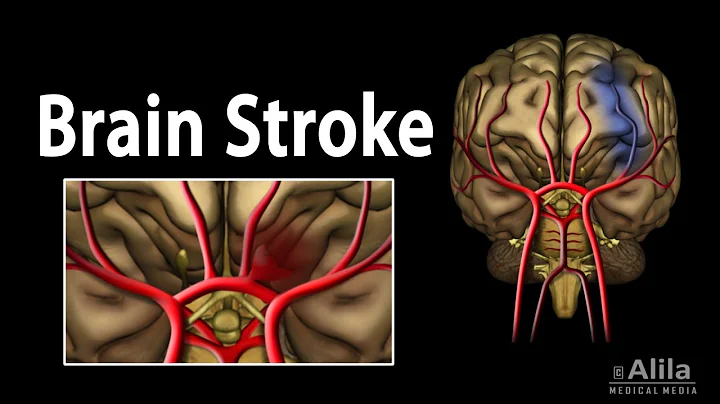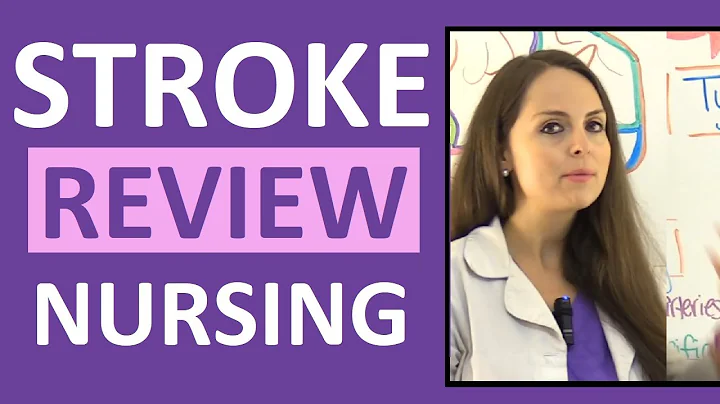
You may often hear that someone suddenly suffered a stroke. Stroke is an acute cerebrovascular disease, characterized by high morbidity, mortality, disability and recurrence rates. At present, stroke has become the number one killer of people's health. More than 13 million people suffer from stroke every year, and about 5.5 million people die from it. It is a common disease, and there are varying degrees of sequelae after stroke.
Fortunately, with the development of science and technology and medical treatment, the risk factors of stroke have been studied more and more deeply, so that stroke can be effectively prevented. However, some risk factors cannot be affected, such as age, gender, or genetic predisposition. However, if known, numerous factors prevail that can be controlled through personal lifestyle or with the help of a doctor. Even if a stroke or brief circulation disorder in the brain (transient ischemic attack, TIA) has occurred, there are many ways to prevent another cerebral infarction or cerebral hemorrhage.
So, can stroke be prevented? There are many studies that have addressed this question, and the answer is definitely yes. Back in 2008, a study involving more than 100,000 participants examined how lifestyle affects the risk of stroke. Five factors that reflect a "healthy lifestyle":
1. Not smoking
2. At least 30 minutes of moderate-intensity physical activity every day
3. A balanced diet
4. Body mass index (BMI) 25 kg/m2
5. Moderate drinking
Results for men and women It's all clear: The more of these factors a person has, the lower their risk of stroke. Medical researchers believe that about half of strokes are caused by an unhealthy lifestyle that ignores these five factors.
A study published in The Lancet back in 2016 was even clearer. Ten factors that favor stroke have been identified worldwide. In addition to an unhealthy lifestyle, these factors include metabolic factors (metabolic parameters) that can be determined through blood tests, as well as environmental factors.
Lifestyle:
- Smoking
- Small actions
- Unhealthy diet
- Metabolism:
- High body mass index (BMI)
- High Fasting blood sugar level
- High cholesterol level
- Glomerular filtration rate Low (suggesting kidney damage)
- Spontaneous bacterial peritonitis
Environmental factors:
- Severe air pollution
- High lead exposure
In this study, scientists hypothesized that 90% of strokes worldwide are caused by a combination of these ten factors. More than three-quarters of strokes can be avoided simply by bringing lifestyle and metabolism levels into a healthy range. When interpreting these results, it is important to note that they were data collected from around the world. Taken together, it can be concluded from these studies and many others that more than half of strokes are preventable and that everyone can take steps to minimize their risk.
1. Improve your lifestyle
A healthy lifestyle can prevent not only stroke, but also many other diseases, such as heart disease, diabetes and even depression . In addition to not smoking, a healthy lifestyle includes eating a balanced diet, drinking less alcohol and getting enough exercise.
2. Nutrition
Research shows that the so-called "Mediterranean diet" is particularly healthy. People who follow this diet can reduce their risk of stroke by up to 32%. But what exactly is the “Mediterranean Diet”? The Mediterranean diet mainly consists of whole grain products, fruits, vegetables and legumes. Nuts and virgin olive oil also play an important role as unsaturated fatty acids foods. This plant-based diet is supplemented with eggs, dairy products, and fish. Meat is rarely served, and when it is, poultry is preferred over red meat.
For many people, drinking is also an integral part of their lifestyle. In fact, even the Mediterranean diet has a glass of wine on the evening menu. Research shows that moderate drinking has a positive impact on stroke risk.However, as long as it does not exceed 15 grams per day, it is equivalent to a cup of milk. When in doubt, it's best not to open the bottle in the first place.
3.Exercise regularly
Even people who exercise regularly have a lower risk of stroke. A meta-analysis that compiled the results of 23 different studies on the topic showed this. Studies show that moderate exercise can reduce the risk of stroke by 20% compared to little or no daily exercise. The risk even dropped by 27% as activity levels increased. Just 30 minutes of brisk walking every day is enough to significantly reduce your risk of stroke. Or bike to work instead of driving.
4. Smoking
Most people know that smoking is harmful to health. However, tobacco use is usually only associated with shortness of breath or lung cancer. But blood vessels can also be damaged by substances contained in smoke, leading to blood vessel calcification or arteriosclerosis, eventually leading to stroke. A recent 2019 meta-analysis found that for every five cigarettes smoked per day, the risk of stroke increased by 12%. 7 Therefore, people who smoke 15 cigarettes per day have a 36% increased risk of stroke compared with nonsmokers. After you quit smoking, your risk drops dramatically.
5. Weight
If you keep the above points in mind and maintain a healthy lifestyle, you will generally not have weight problems.
Body mass index (BMI) indicates whether your weight is healthy relative to your height. A BMI between 18 and 24 kg/m^2 is desirable. A person is considered overweight if their BMI exceeds 24 kg/m^2. This excess weight should then be reduced through lifestyle changes.
6. Stress
Intense emotional stress can promote the development of stroke. If a person is stressed, his sympathetic nervous system will be activated and become part of the autonomic nervous system . He went into "fight or flight" mode. Especially under chronic stress, this pattern can remain active for long periods of time without the body being able to recover. This can cause high blood pressure and damage blood vessels.
6. Treating pre-existing conditions
Lifestyle is important because it can influence the development of conditions such as high blood pressure, atrial fibrillation or diabetes. To prevent stroke, these conditions must be recognized and adequately treated.
7, High blood pressure
High blood pressure is the most common risk factor for stroke and other cardiovascular diseases. According to "The Lancet" magazine: More than 1/3 of Chinese adults have high blood pressure, but only about 1/20 have blood pressure under control. Three-quarters of people over 70 years old have high blood pressure (high arterial pressure). blood pressure). Risk factors for high blood pressure that may be affected include obesity, smoking, or stress.
Blood pressure can often be controlled through lifestyle changes, such as eating a healthier diet, exercising more, or reducing nicotine intake. Additionally, blood pressure can be lowered with medications.
8. Atrial fibrillation
Atrial fibrillation is a cardiac arrhythmia that originates in the atria . Arrhythmic excitation waves cause the heart to contract irregularly. The likelihood of developing arrhythmias increases with age. Men are generally more susceptible than women. If atrial fibrillation occurs, blood will not flow through the heart normally, and the possibility of forming thrombus increases. These clots can then travel through the bloodstream to the brain and block blood vessels there. Atrial fibrillation is primarily treated with "blood thinners" (anticoagulants), which are designed to prevent blood clots from forming.
9. Diabetes
Poorly controlled diabetes can also contribute to the development of stroke because increased sugar levels in the blood can damage blood vessel walls. There are many types of diabetes, the most important being type 1 and type 2.
1 diabetes is an autoimmune disease in which the cells that produce insulin are destroyed. It usually manifests itself at a young age and must be treated with regular doses of insulin.
On the other hand, 2 type diabetes has many different causes and its treatment is correspondingly more varied. It only manifests itself in old age and is associated with risk factors such as obesity, lack of exercise and unhealthy diet.
10. Dyslipidemia
Lipid metabolism disorder is related to elevated levels of blood lipids .In particular, increases in low-density lipoprotein cholesterol can damage blood vessels in the long term because it promotes the development of atherosclerosis. Adopting a healthy lifestyle can reduce cholesterol in the blood to some extent. However, supportive medications, so-called statins , may also be needed.
11. Increased thrombophilia
Blood coagulation is important in the wound healing process. Thrombus forms, closing the wound and stopping blood loss. However, if thrombophilia increases, these clots can also form for no apparent reason, blocking blood vessels. The formation of these blood clots, known as hemostasis, follows an extremely complex system. The smallest change could break the system. These are usually hereditary, but there are also acquired factors that increase the tendency to develop blood clots.
Female contraceptives deserve special mention here, as lack of exercise or smoking can also promote thrombophilia. Here, blood thinners are also given to counteract the increased tendency to clot.
Furthermore, in order to prevent recurrence of stroke, it is necessary to minimize the above risk factors. The risk of recurrence was highest in the first year, about 7.4%, and decreased each year thereafter. After 5 years, only about 2.6% of those affected had another stroke.
About 8 out of 10 people who have a stroke will not have another stroke within the next 5 years. 10 This is certainly related to good follow-up care by doctors and patients. Because by fully understanding their condition, compliance with treatment and lifestyle changes, patients can have a significant impact on the likelihood of another stroke.





















